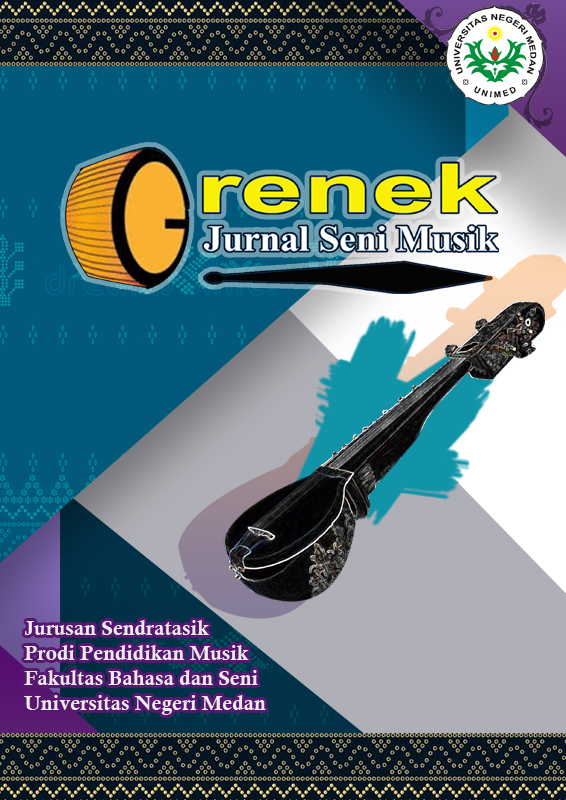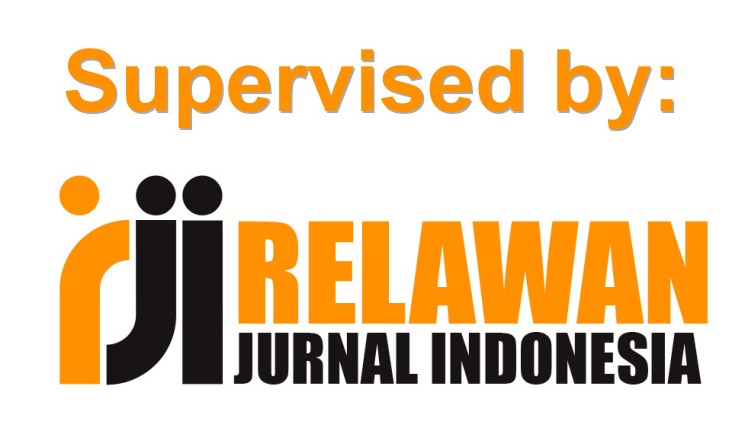Regional Pop Music in Indonesia
DOI:
https://doi.org/10.24114/grenek.v14i1.63812Keywords:
music, pop, pop music, popular culture, traditional music, regional pop musicAbstract
Music is an essential part of our cultural life, a power to enrich our lives, build relationships between people, and shape identities and places. Indonesia's contemporary artistic and cultural life is very diverse, considering that Indonesia has a wide geographical area in Southeast Asia, with more than 17,000 islands “ and is the 4th most populous country in the world. Indonesia has a music landscape that is increasing. Some music is Karawitan from Java and Bali, Keroncong in Java, and Music with Sape from Kalimantan to Malay music in most areas of Sumatra. Indonesian musicians combine the elements of traditional music with elements of pop music. This paper will discuss how pop music from urban areas is combined with traditional music from each region in Indonesiaand then gives a new genre known as musik pop daerah (regional pop music)”the methodology used for this paper qualitative methodwith literature study. The result showed that pop music is a sign that culture”or, in this case, music”is fluid and can change according to the times.References
Adorno, T. (1998). On Popular Music: Cultural Theory and Popular Culture. Athens: The University of Georgia Press.
Akmaliah, W. (2022). The Rise of the Godfather of Broken Hearts: The Disruption of Local Music’s Campursari Through Didi Kempot’s Music Performances. In Popular Music in Southeasr Asia: Sonic (under) Currents and Currencies. Sunway University Press.
Aryandari, C. (2021). The indonesian popular music industry: Navigating shadows of politics and cultural uncertainty. In Made in Nusantara: Studies in Popular Music.
Baders, S. (2011). Dancing bodies on stage, negotiating nyawer encounters at dangdut and tarling dangdut performances in West Java. Indonesia and the Malay World, 39(115), 333-355.
Creswell, J. W. (2003). Research Design Qualitative Quantitative and Mixed Methods Approaches. Los Angeles: SAGE.
Denning, M. (2015). Noise Uprising: The Audiopolitics of a World Musical Revolution. London: Verso.
Frederick, W. H. (1982). Rhoma Irama and the Dangdut Style: Aspects of Contemporary Indonesian Popular Culture. Indonesia, (34), 103-130.
Hung, N.-H. (2017). Transmission and Innovation of Kasidah (Lagu Islam) in Indonesian (1975~) Take a Case Study on Nasida Ria Kasidah Modern in Semarang. International Journal of Creative and Arts Studies, 4(1), 49-58.
Kasim, S. (2023). Mengenal Wayang Sasak (M. Agus Surya, Ed.; 1st ed.). Lombok: CV. Elhikam Press.
Khadavi, M. J. (2014). Dekonstruksi Musik Pop Indonesia Dalam Perspektif Indsutri Budaya. Jurnal Humanity, 9(2), 47-56.
Mustolehudin, M. (2012). Mengenal Ajaran Gerakan Syiγçöah. Harmoni, 11(4), 171-176.
Raditya, M. H. (2021). Rhoma Irama: Konstruksi dan Reproduksi Tubuh Sang Raja Dangdut. Jurnal Kajian Seni, 8(1), 96-115.
Rasmussen, A. K. (2005). The Arab musical aesthetic in Indonesian Islam. The World of Music, 65-89.
Sartika, S., & Mulyana, A. (2021). Kesenian Tarling: Pertunjukan Hiburan, Pendidikan, Media Komunikasi 1966-2000. FACTUM: Jurnal Sejarah Dan Pendidikan Sejarah, 10(1), 89-100.
Setyawan, A. (2021). Aubade: Kumpulan Tulisan Musik. Yogyakarta: Arung Wacana.
Susilo, H., & Yampolsky, P. (1989). Lokananta: A Discography of the National Recording Company of Indonesia 1957-1985. Ethnomusicology, 33(2), 161-164.
Taher, D. (2009). Sejarah Musik 2. Yogyakarta: Universitas Negeri Yogyakarta.
Umam, K., & Martini, L. A. R. (2022). Disrupsi Teknologi Versus Adaptasi: Geliat Grup Musik Nasida Ria di Era Kiwari (Kajian Arkeologi Media). Endogami: Jurnal Ilmiah Kajian Antropologi, 5(2), 129-135.
Wallach, J. (2008). Modern noise, fluid genres: Popular music in Indonesia, 1997-2001. In Modern Noise, Fluid Genres: Popular Music in Indonesia, 1997-2001. Madison: University of Wisconsin Press.
Weintraub, A. N. (2010). Dangdut Stories: A Social and Musical History of Indonesia’s Most Popular Music. New York: Oxford University Press.
Weintraub, A. N. (2011). Morality and its (Dis)contents: Dangdut and Islam in Indonesia. New York: University of Wisconsin Press.
Downloads
Published
Issue
Section
License
Copyright (c) 2025 Citra Aryandari, Aris Setyawan

This work is licensed under a Creative Commons Attribution-ShareAlike 4.0 International License.
Authors published with the Grenek: Jurnal Seni Musik agree to the following terms:
- Authors retain copyright and grant the journal the right of first publication with the work simultaneously licensed under a Creative Commons Attribution License (CC BY-SA 4.0) that allows others to share the work with an acknowledgment of the work's authorship and initial publication in this journal.
- Authors are able to enter into separate, additional contractual arrangements for the non-exclusive distribution of the journal's published version of the work (e.g., post it to an institutional repository or publish it in a book), with an acknowledgment of its initial publication in this journal.
- Authors are permitted and encouraged to post their work online (e.g., in institutional repositories or on their website) prior to and during the submission process, as it can lead to productive exchanges, as well as earlier and greater citation of published work. (See The Effect of Open Access)








